Wood is widely used in life, from crafting furniture and building structures to creating musical instruments and art, wood offers a unique combination of beauty, strength, and workability. But with countless varieties available, navigating the world of wood can be a daunting task. This comprehensive guide explores the different types of wood, categorizing them into hardwoods, softwoods, and engineered wood options. By delving into their characteristics, strengths, and weaknesses, you'll gain the knowledge to make informed decisions for your next woodworking project, be it building a bookshelf or selecting the perfect hardwood floor.
How many types of wood are there?
There are more than 100,000 different wood types in the world. Wood can be broadly categorized into three main categories: softwoods, hardwoods, and engineered wood.

Hardwood and softwood
Despite their names, hardwood and softwood aren't necessarily defined by how hard they feel. Instead, the distinction is rooted in botany. Here's how to tell them apart:
- Growth Rate and Leaves: Hardwoods are slow-growing, broad-leaved, flowering trees that lose their leaves seasonally (deciduous). Softwoods, on the other hand, are fast-growing evergreens, typically conifers like pines and firs, with needles instead of leaves.
- Reproduction: Hardwoods produce seeds encased in shells (fruits or nuts), while softwood seeds are either exposed or found in cones.
- Physical Characteristics: Generally, hardwoods are denser, heavier, and more expensive than softwoods. They also have a finer grain, darker color, and lower sap content. Softwoods, in contrast, are lighter in weight and density, have a looser grain, tend to be lighter in color, and have a higher sap content. Additionally, hardwoods offer better fire resistance than softwoods.
![]()
Hardwood encompass a diverse range of different types of wood, prized for their exceptional strength, beauty, and longevity. These woods have played a central role in shaping human civilization, gracing everything from furniture and flooring to architectural marvels and treasured instruments. While generally denser and heavier than softwoods, hardwoods offer a unique combination of durability, workability, and visual charm that continues to inspire woodworkers and designers alike.
Softwood is one of the major categories along with hardwoods and engineered wood, encompass a wide range of different types of wood that have played a crucial role in construction, furniture making, and countless other applications for centuries. While the name might suggest a lack of sturdiness, softwoods offer a surprising combination of affordability, workability, and strength, making them a popular choice for woodworkers of all levels.
It's important to remember these are general distinctions. There can be exceptions, but understanding these core characteristics will help you differentiate between hardwoods and softwoods in most cases.
> Read more: What is better, hardwood or softwood?

Engineered wood
Engineered wood is a broad term encompassing a variety of wood products manufactured by combining wood elements (wood scraps, sawdust, veneers, or even fast-growing wood species) with adhesives, resins, or other binding agents. It offers numerous advantages over solid wood such as strength, stability, cost-effectiveness,... making it a popular choice for many woodworking applications.
> Get more details: ac plywood, bendable plywood

27 types of wood furniture with pictures
1. Oak (hardwood)
Oak, a hardwood renowned for its strength, durability, and versatility, has long been a staple in woodworking and construction (types of wood for building). Its distinctive grain pattern and warm color add a touch of elegance to any project. Oak is naturally resistant to rot and decay, making it an ideal choice for flooring, furniture, and outdoor applications.

2. Walnut (hardwood)
Walnut, a premium hardwood prized for its rich, dark color and intricate grain patterns, exudes luxury and sophistication. Its tight grain and smooth texture make it a joy to work with, and it takes a beautiful polish. Walnut is often used for high-end furniture, cabinetry, and flooring.
> Explore further: hdo vs mdo plywood, tongue and groove plywood
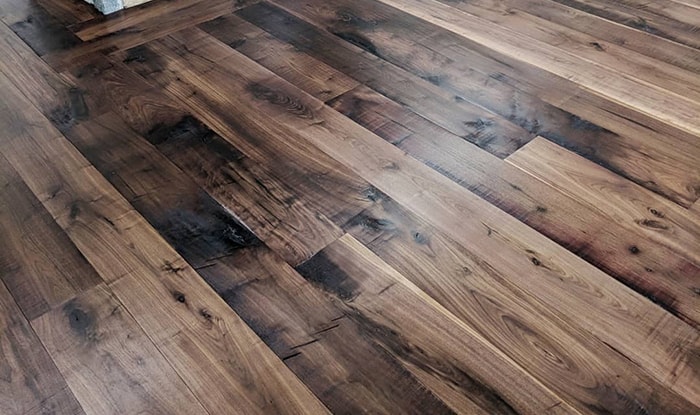
3. Ash (hardwood)
Ash wood, a moderately priced hardwood, offers a winning combination of flexibility and Ash, a hardwood known for its strength, flexibility, and light color, is a versatile choice for a variety of woodworking projects. Its open grain pattern and light brown hues create a sense of airiness and openness. Ash is one of wood types for furniture, cabinets, and sporting goods.
> Learn more:

4. Beech (hardwood)
Beech wood, a hardwood renowned for its exceptional strength and ability to bend, offers a unique combination of practicality and understated beauty. While it may lack the visual drama of some other different types of wood, beech's light color and tight grain create a warm and inviting atmosphere in any space. Furthermore, its excellent staining properties allow it to mimic more expensive woods like mahogany and cherry, adding versatility to its appeal.
> Read more: 1/8 inch plywood, 15/32 plywood, 19/32 plywood, 5x10 plywood
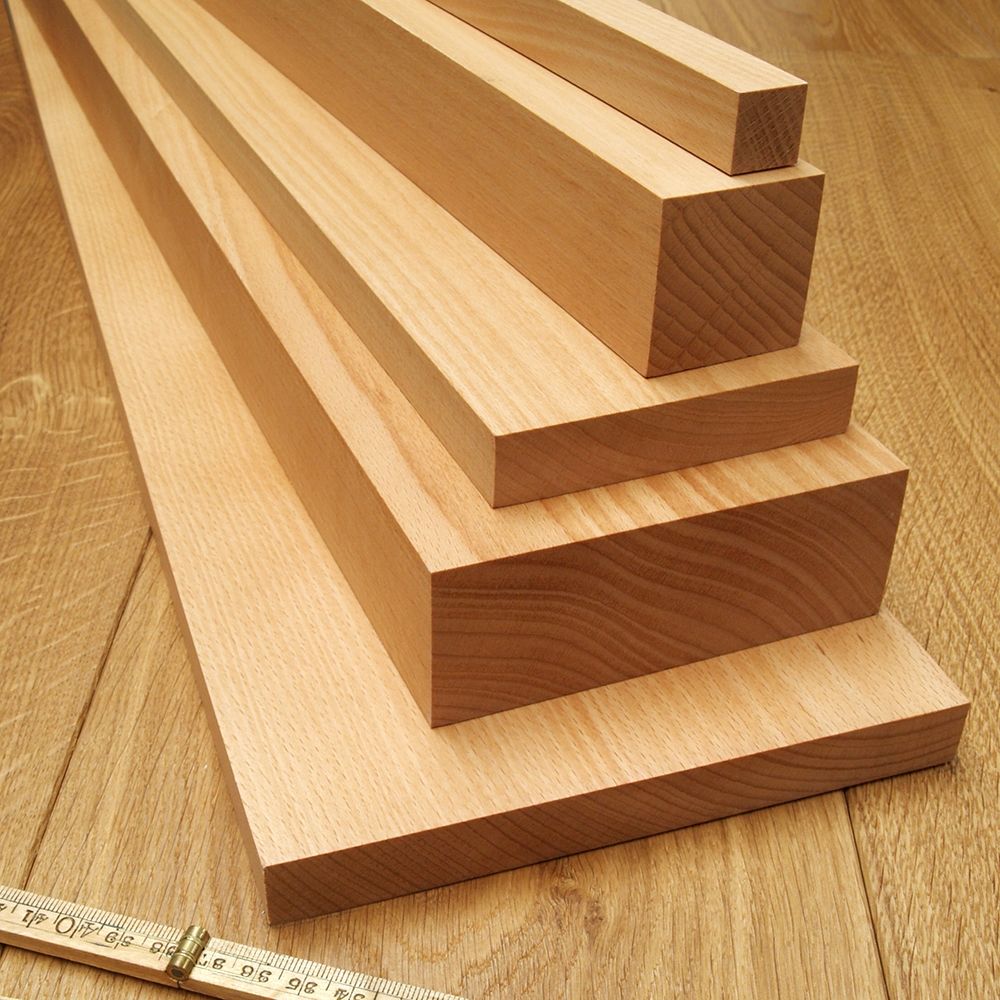
5. Mahogany (hardwood)
Mahogany wood, a name synonymous with luxury and quality, finds itself at a crossroads. Once a readily available timber, unsustainable logging practices have driven the genuine Honduran Mahogany variety to the endangered species list under CITES regulations. This hasn't diminished its allure, however. The rich, reddish-brown wood with its distinctive grain darkens over time, acquiring a captivating sheen. Musicians particularly treasure this wood, as it imparts a warm and resonant tone to instruments.
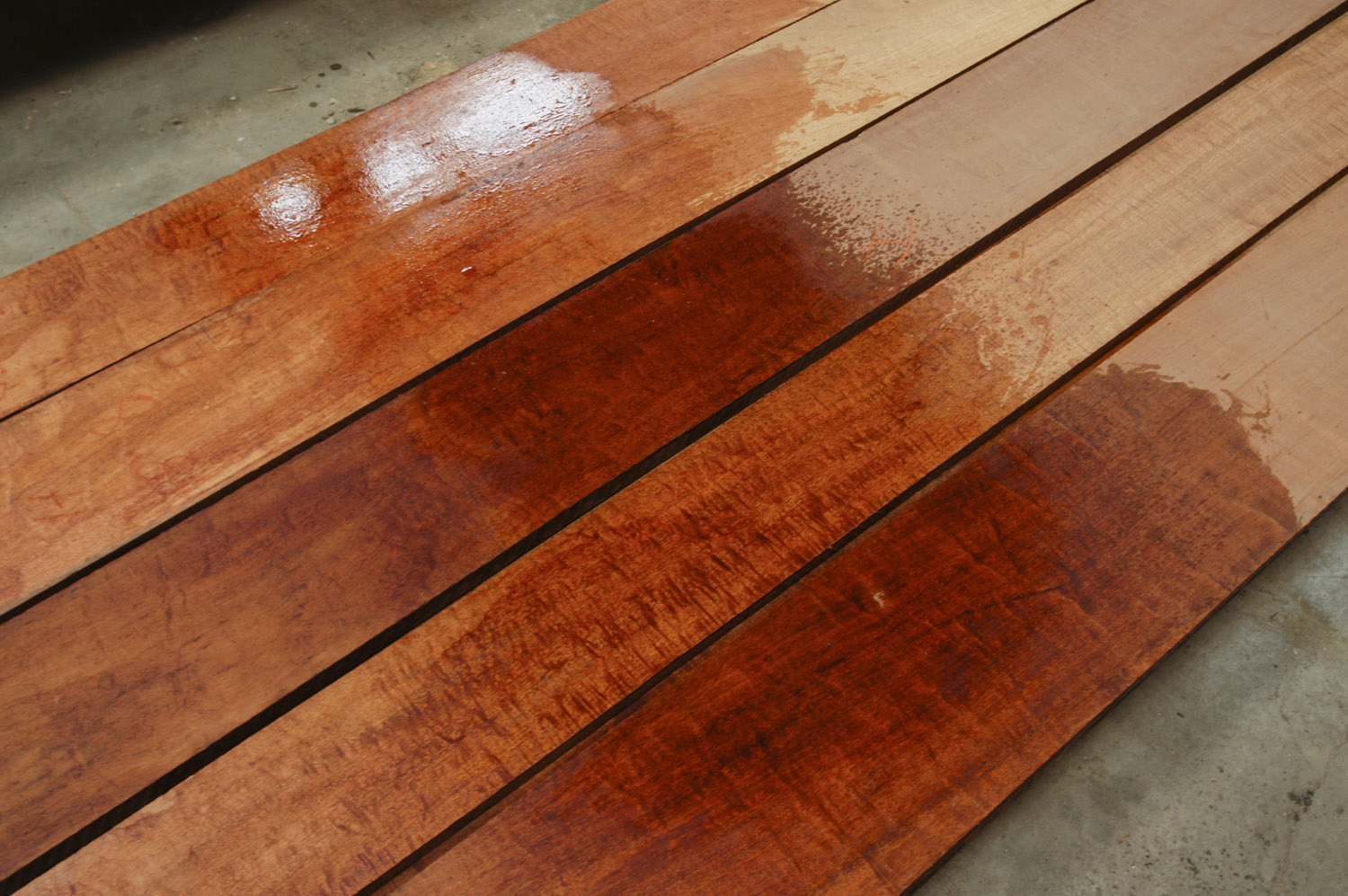
6. Maple (hardwood)
Maple, a prominent hardwood throughout the United States, stands out for its exceptional durability and versatility. Prized for its dense and heavy nature, maple is particularly resistant to moisture, making it a top choice for demanding applications like butcher blocks and furniture that endure constant use. The visual appeal of maple comes in two forms: a straight grain pattern or a more distinctive swirling pattern known as "bird's-eye." This light brown or reddish wood readily accepts stain, allowing for beautiful transformations to resemble more expensive hardwoods.

7. Mango (hardwood)
Mango wood emerges as a champion of sustainability in the hardwood world, offering a compelling alternative to its more threatened counterparts like mahogany. This versatile and affordable wood boasts exceptional durability, making it a practical choice for a wide range of applications (furniture, ornaments, musical instruments,...). The heartwood, typically a golden brown that deepens with age, possesses excellent water resistance, especially when treated with a polish or wax.

8. Acacia (hardwood)
Acacia wood, a hardwood known by a multitude of names including mimosa and wattle, boasts a rich history and impressive qualities. Its exceptional hardness and durability played a pivotal role in the rise of the English Royal Navy during the 1800s. The wood's inherent water resistance made it ideal for shipbuilding, allowing the construction of the legendary "ships-of-the-line" that ensured naval dominance.Among the many different types of wood, Acacia's exceptional resistance to insects, rot, and water makes it a perfect candidate for flooring, as well as household items like cutting boards and bowls.
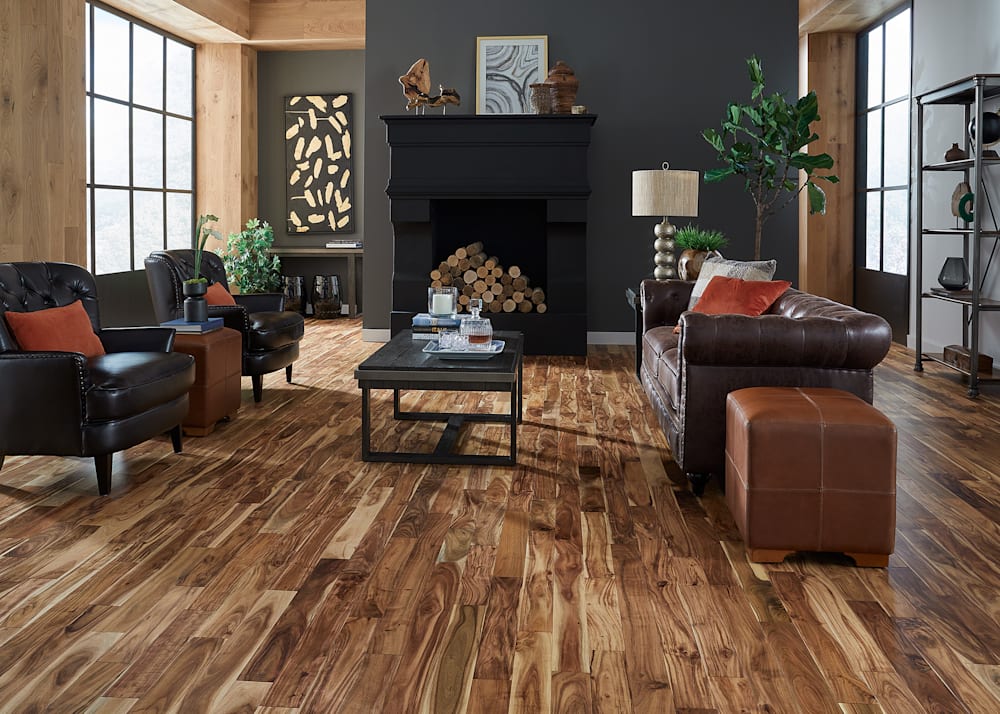
9. Mindi (hardwood)
Mindi wood, also known as white cedar or Chinaberry, offers a compelling alternative to teak, particularly for those seeking a lighter-colored and more affordable option. While not quite as regal as teak, Mindi boasts several attractive qualities. Like teak, Mindi is naturally resistant to decay and fungus, making it suitable for long-lasting furniture applications. It's also known for its ease of working, allowing for intricate designs and smooth finishes. Unlike teak's darker tones, Mindi offers a warm, light color that matures into a beautiful golden hue with age.
However, Mindi's durability isn't quite on par with teak. It may not be ideal for harsh outdoor environments like ship decks, but it excels in indoor settings and can handle some outdoor use with proper care. Due to its affordability, workability, and attractive appearance, Mindi has become a popular choice for furniture construction, cabinetry, and even veneers.

10. Teak (hardwood)
Which wood is highest quality? Teak species (Tectona grandis) is a tropical hardwood prized for its exceptional qualities. Often referred to as the "king of wood," teak boasts a unique combination of beauty and brawn. Its naturally high oil content grants it exceptional resistance to water, rot, and even fire. This weatherproof quality, along with its attractive golden brown heartwood and easy workability, makes teak a versatile material for a wide range of applications (outdoor furniture, interior design, marine applications,…)

11. Balsa (hardwood)
Balsa wood challenges our traditional understanding of "hardwood." Classified as such due to its broad leaves, balsa stands out among the many different types of wood. It's anything but hard. It's incredibly lightweight, soft, and boasts a pale white or oatmeal color. This unique combination makes it a prime candidate for applications requiring buoyancy and low weight.
The name "balsa" actually comes from the Spanish word for "raft," reflecting its natural floatation properties. Unsurprisingly, balsa is a popular choice for building surfboards, aircraft components, and even fishing net floats. Its ease of workability makes it ideal for shaping and crafting, though sharp tools are necessary to prevent crumbling or splitting due to its soft nature.

12. Bamboo (hardwood)
Bamboo stands out as a unique option in the world of hardwoods. While technically a grass, its remarkable strength and density make it comparable to maple or red oak. This combination of durability and attractive aesthetics positions bamboo as a versatile and eco-friendly alternative to traditional hardwoods. The dense fibers of bamboo make it a suitable material for high-end applications. Its strength and smooth finish translate beautifully into fine furniture pieces, cabinets, and even hardwood flooring. However, bamboo's versatility extends beyond interiors. The natural waxy coating on bamboo stems offers excellent weather resistance, making them ideal for garden features like fencing and privacy screens.
> Learn more: Bamboo Plywood: A Comprehensive Guide

13. Birch (hardwood)
Birch, known for its economical price tag, is a widely used hardwood. Available in three main varieties (black, white, and yellow), birch offers a tight, smooth grain with a uniform appearance. Despite its strength and weight, birch can shrink considerably during drying. However, its workability with sharp tools makes it a favorite for crafting cabinets, toys, and even flooring. Its strength makes it suitable for furniture and cabinetry projects, while its affordability positions it as a budget-friendly alternative to other hardwoods. The fine grain offers a visually appealing and smooth surface that readily accepts stains, allowing for customization.
> Learn more: Birch Plywood: Uses, Benefits, and Drawbacks Explored

14. Cherry (hardwood)
Prized for both its fruit and its exceptional woodworking qualities, cherry wood is a sought-after hardwood. The wood itself ranges from a creamy white to a rich reddish-brown, and deepens in color as it ages, adding a touch of timeless elegance to any project. Beyond its beautiful color, cherry boasts a fine, straight grain that creates a smooth surface and allows for a luxurious finish. This combination of aesthetics and workability makes cherry a popular choice for high-end furniture and cabinetry.
Among the many different types of wood, cherry's impressive strength and ease of shaping make it ideal for crafting musical instruments, carvings, flooring, and even paneling. The uniform grain pattern ensures a consistent visual appeal across various uses.
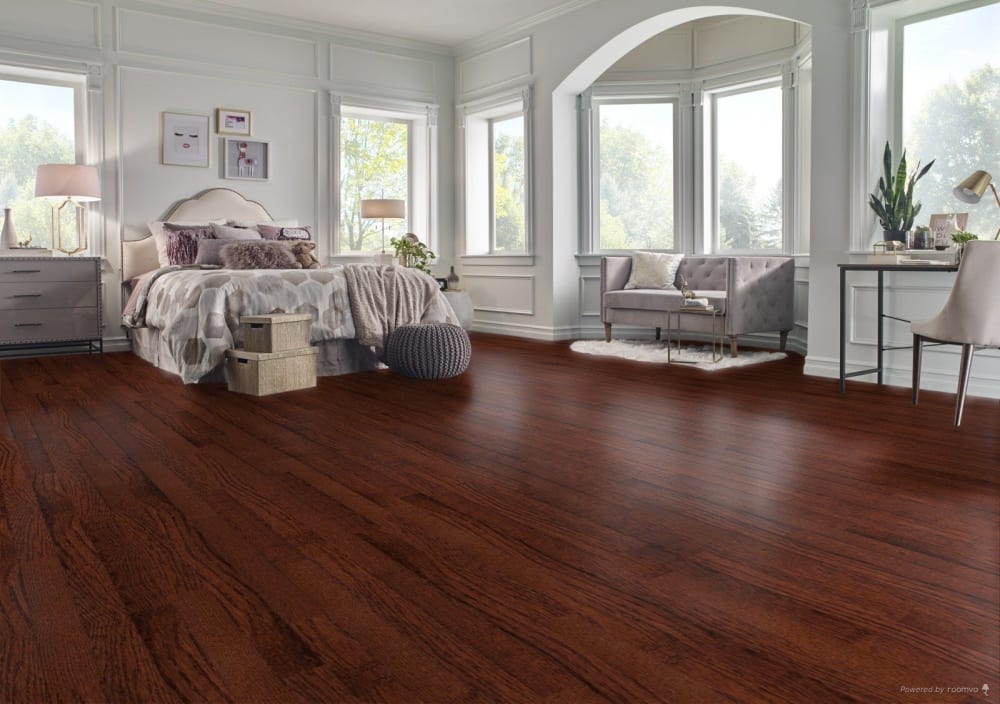
15. Ebony (hardwood)
Ebony, instantly recognizable for its near-black color, is a prized wood reserved for specialty projects. Its high density makes it ideal for intricate carvings and fine detail work, allowing for stunning creations. The rich black hue, often accented with occasional brown streaks, adds a touch of timeless elegance to any piece. Furthermore, ebony polishes beautifully, achieving a high-gloss finish that further accentuates its luxurious look. Beyond aesthetics, ebony boasts good dimensional stability, minimizing warping and cracking over time.

16. Poplar (hardwood)
Poplar, a light-colored hardwood ranging from creamy white to yellowish brown, is a popular choice for hobbyists and budget-conscious woodworkers. Its soft nature and straight, uniform grain make it easy to work with and machine using power tools. While not known for its inherent beauty, poplar readily accepts paint and stain, allowing for customization to suit any project. Additionally, poplar is often sourced from fast-growing trees, making it a sustainable option.
> For more details: Poplar Plywood: Lightweight & Strong Champion For Furniture
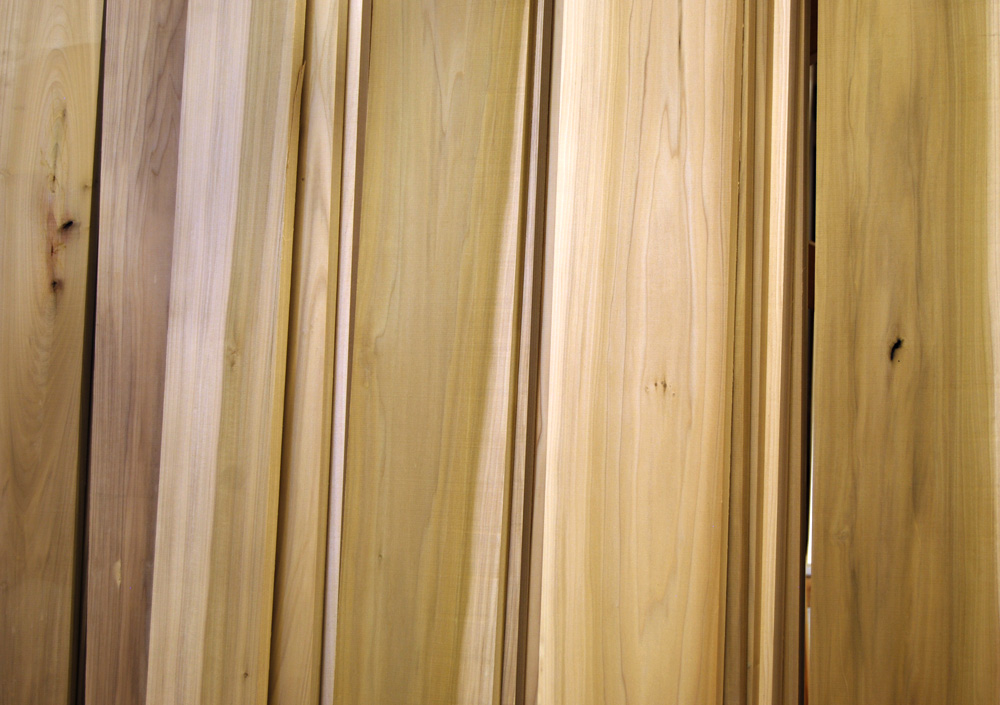
17. Pine (softwood)
What type of wood is most common? Pine, one of the most common types of wood due to its abundance and affordability, is a versatile softwood prized for its lightweight nature, ease of workability, and attractive appearance. Priced lower than most hardwoods, pine offers a versatile option for construction, furniture making, and DIY projects.
The wood itself varies in color from a creamy yellow to a reddish-brown, and boasts a close grain with visible growth rings. This attractive grain pattern, along with its ability to take stain well, makes pine ideal for a variety of aesthetics. A defining characteristic of pine is the presence of knots, which can add a rustic charm to a finished piece, but may also require extra care during woodworking.
> Read more: Pine Plywood: Benefits, Uses, Buying And Maintenance Tips
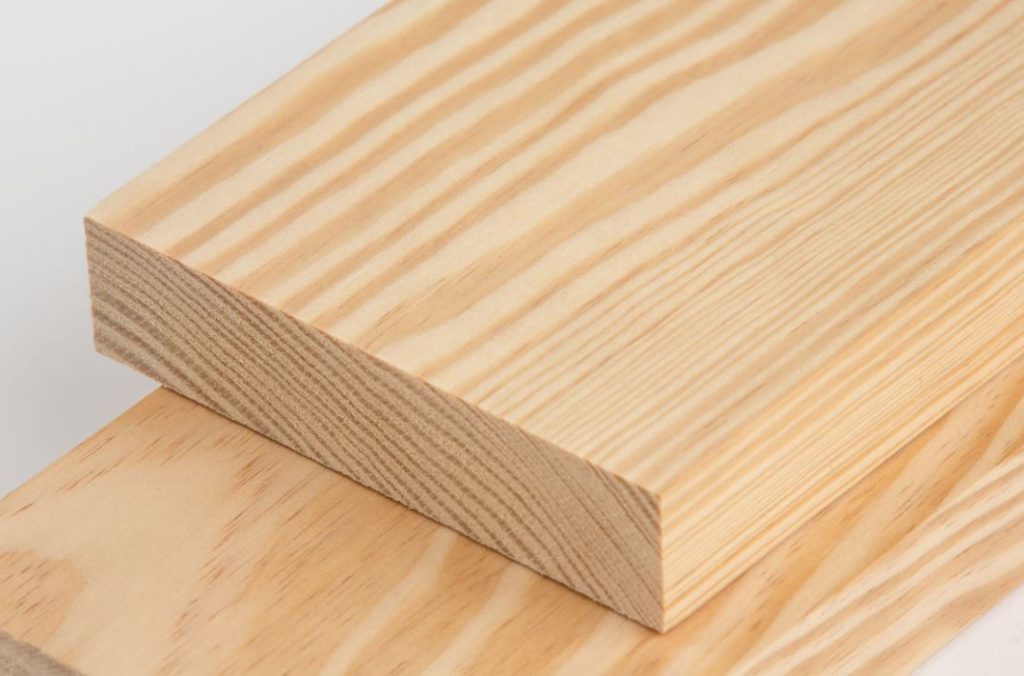
18. Redwood (softwood)
Redwood, also known as Sequoia, is a giant among softwoods, reaching impressive heights and boasting exceptional weather resistance. While similar to pine in some ways, redwood falls short in terms of durability and sustainability. However, redwood surpasses pine in its natural resistance to decay and insects, making it a prime choice for outdoor projects like furniture and decking.
> Read more: Red Oak plywood: Benefits and top uses

19. Yew (softwood)
Despite being classified as a softwood, yew wood is surprisingly hard and durable, even surpassing some hardwoods in these qualities. This exceptional strength is balanced by the wood's tendency to twist and grow unevenly. While this limits its use for larger projects, it makes yew ideal for intricate applications. Yew's unique properties are showcased in its traditional use for items like jewelry boxes and high-end furniture veneers. Additionally, its good bending capabilities make it suitable for crafting the iconic Windsor Chair. In the world of different types of wood, yew occupies a fascinating niche.

20. Cedar (softwood)
Cedar wood, a prized softwood known for its aromatic fragrance, offers a unique combination of beauty and durability. Available in various types, with red and white cedar being the most common, cedar boasts natural weather resistance and insect-repelling properties. This makes it a versatile choice for applications both indoors and outdoors, including closet linings, decks, fences, chests, and dressers. The lightweight nature of cedar adds to its ease of use and installation.
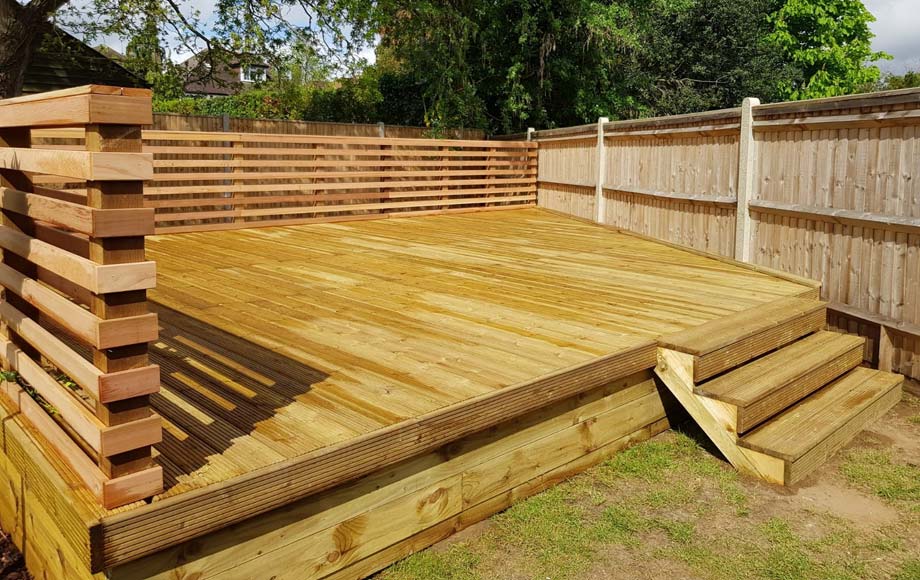
21. Douglas fir (softwood)
Douglas fir is a unique softwood that challenges expectations. Despite its classification, it boasts impressive strength and a high strength-to-weight ratio, making it a valuable building material. While not quite as rot-resistant as cedar, Douglas fir excels in repelling insects. The wood itself features a pronounced, straight grain with a reddish-tan color. This distinctive grain pattern, coupled with its workability, makes Douglas fir a popular choice for construction lumber, decking, and various DIY projects. Adding to its appeal is its affordability, making it a budget-friendly option for many homeowners.
> Learn more: Douglas Fir plywood: Pros, Cons and Common Uses

22. Spruce (softwood)
Spruce wood, a versatile evergreen softwood, is a popular choice for construction projects and DIY applications due to its affordability and ease of use. Often sold as SPF lumber (Spruce-Pine-Fir), it is known for its light color, earning it the nickname "White Wood." Among the many different types of wood, spruce's smooth, straight grain and impressive sound resonance make it an ideal material for crafting musical instruments, particularly guitars and string instruments, as well as pianos. However, its susceptibility to swelling and moisture damage limits its use for outdoor applications.

23. Fibreboard (engineered wood)
Fibreboard is an eco-friendly option as it utilizes recycled wood materials like sawdust, wood chips, and paper. Bonded with resin and pressed into sheets, it provides a lightweight and affordable solution for construction projects and furniture. Fibreboard boasts good insulation properties and can handle significant weight. However, it is not as strong or durable as solid wood and can be susceptible to moisture damage. Additionally, cutting fibreboard releases formaldehyde, a hazardous gas, so proper ventilation and safety measures are crucial.

24. MDF - Medium Density Fibreboard (engineered wood)
Often mistaken for general fibreboard, MDF is a denser variant with a density ranging from 600 to 800 kg/m3. Similar to fibreboard in its composition and characteristics, MDF offers a smoother surface and cuts cleanly without splintering. A drawback of MDF is its weak hold on screws and nails due to the absence of a distinct grain. Concerns regarding formaldehyde emissions have spurred research into alternative bonding methods for MDF.
> Read more: MDF vs. Plywood: Which Is Better for Your Project?

25. Particle Board (engineered wood)
Particle board shares similarities with fireboard and MDF in its manufacturing process. However, it utilizes larger wood flakes and chips, resulting in a less dense structure with potential voids. These voids can cause chipped edges when cutting particle board. While offering a budget-friendly option for furniture, particle board is less durable than MDF or solid wood, being prone to warping and moisture damage. Formaldehyde use in some particle board production necessitates caution during cutting.
> Learn more: Particle Board Vs Plywood: Which Is Better?

26. Plywood (engineered wood)
Plywood stands out for its strength and rigidity. Made by layering thin wood sheets (veneers) at right angles and gluing them together, plywood offers superior resistance to bending and warping. The surface veneer provides a smooth, high-quality finish, while the inner layers ensure structural integrity. Various types of plywood cater to specific needs, including tropical plywood for construction, marine plywood for wet environments, and hardwood or softwood plywood for flooring applications.
> Learn more: What Is Plywood? How Is Plywood Made?

27. Veneer (engineered wood)
Veneer refers to thin slices of wood used to create an attractive surface on furniture or other objects. This allows for a luxurious finish using a more economical material underneath. Veneers are prized for their aesthetic appeal and resource efficiency, as they maximize the use of valuable wood from a single log. In today's environmentally conscious world, veneers are seen as a sustainable way to achieve a beautiful wood finish, , offering an alternative to using solid wood for all applications within the world of different types of wood.
> Read more: What Is Laminated Veneer Lumber (LVL)?

What Things Can Wood Be Used For?
Wood is one of the most versatile and widely used natural materials in the world. Its unique combination of strength, beauty, and workability makes it ideal for countless applications across various industries. Here are some of the most common and important uses of wood:
1. Furniture making
Wood is a top choice for producing furniture because of its durability and aesthetic appeal. From elegant dining tables and sturdy chairs to cabinets, beds, and decorative items, wood offers timeless beauty and long-lasting quality.
2. Construction and building materials
Wood is a fundamental building material used in framing houses, making doors, windows, flooring, and ceilings. Its natural strength and ease of use make it essential in both traditional and modern construction.
3. Flooring
Wood flooring remains a popular option due to its warm look and durability. It includes solid hardwood floors, engineered wood floors, and outdoor decking materials that add value and style to homes and commercial spaces.
4. Handicrafts and decorative art
Wood is favored by artisans for making sculptures, carvings, wall decorations, and handcrafted furniture. Its natural grain and texture add character to artistic pieces.
5. Shipbuilding and marine uses
Historically, wood was the main material for building boats and ships. Even today, wood is used in yacht interiors, decorative panels, and small boats, valued for its strength and natural resistance to water when properly treated.
6. Sports and recreational equipment
Wood is used to make various sports tools such as badminton rackets, baseball bats, skateboards, and children’s toys, thanks to its lightweight yet durable nature.
7. Packaging and transportation
Wooden pallets and crates are widely used for shipping goods safely, providing a reusable, strong, and eco-friendly packaging solution.
8. Outdoor furniture and Garden structures
Wood is ideal for outdoor use in garden benches, swings, pergolas, and fences due to its natural beauty and strength. With proper treatment, it withstands weather conditions well.
9. Paper production
Wood is the primary raw material for the paper industry. Wood pulp is processed to produce paper, cardboard, and other paper products used daily worldwide.
With its vast array of options, the world of wood offers something for every project and budget. By understanding different types of wood and their uses, as well as their pros and cons, and engineered wood, you can make informed choices that align with your specific needs.
VINAWOOD – Vietnam Plywood Supplier & Manufacturer









